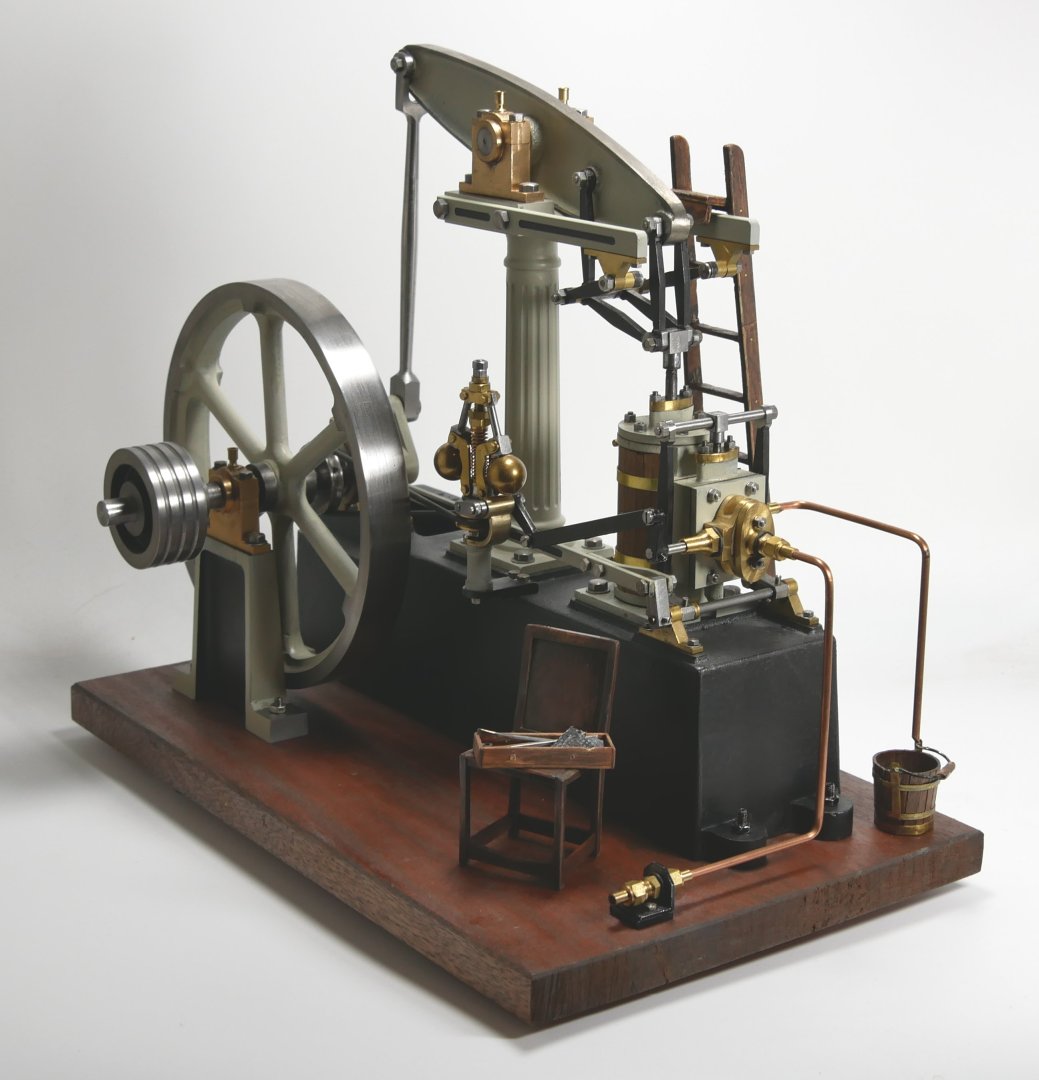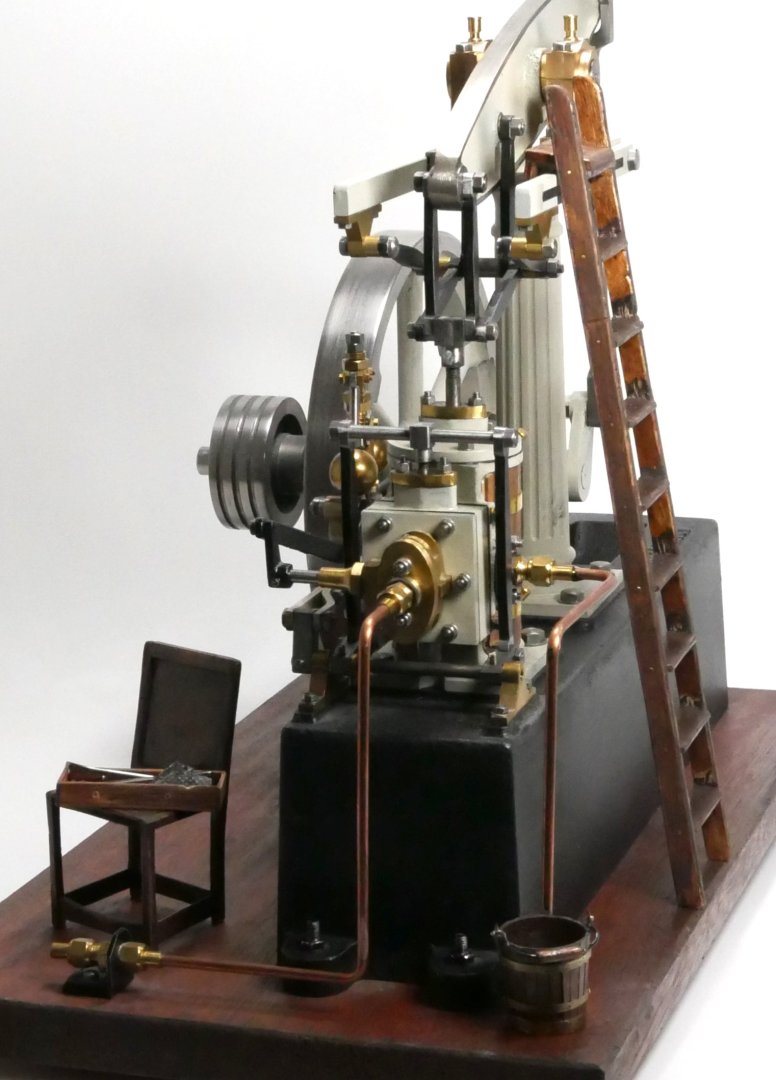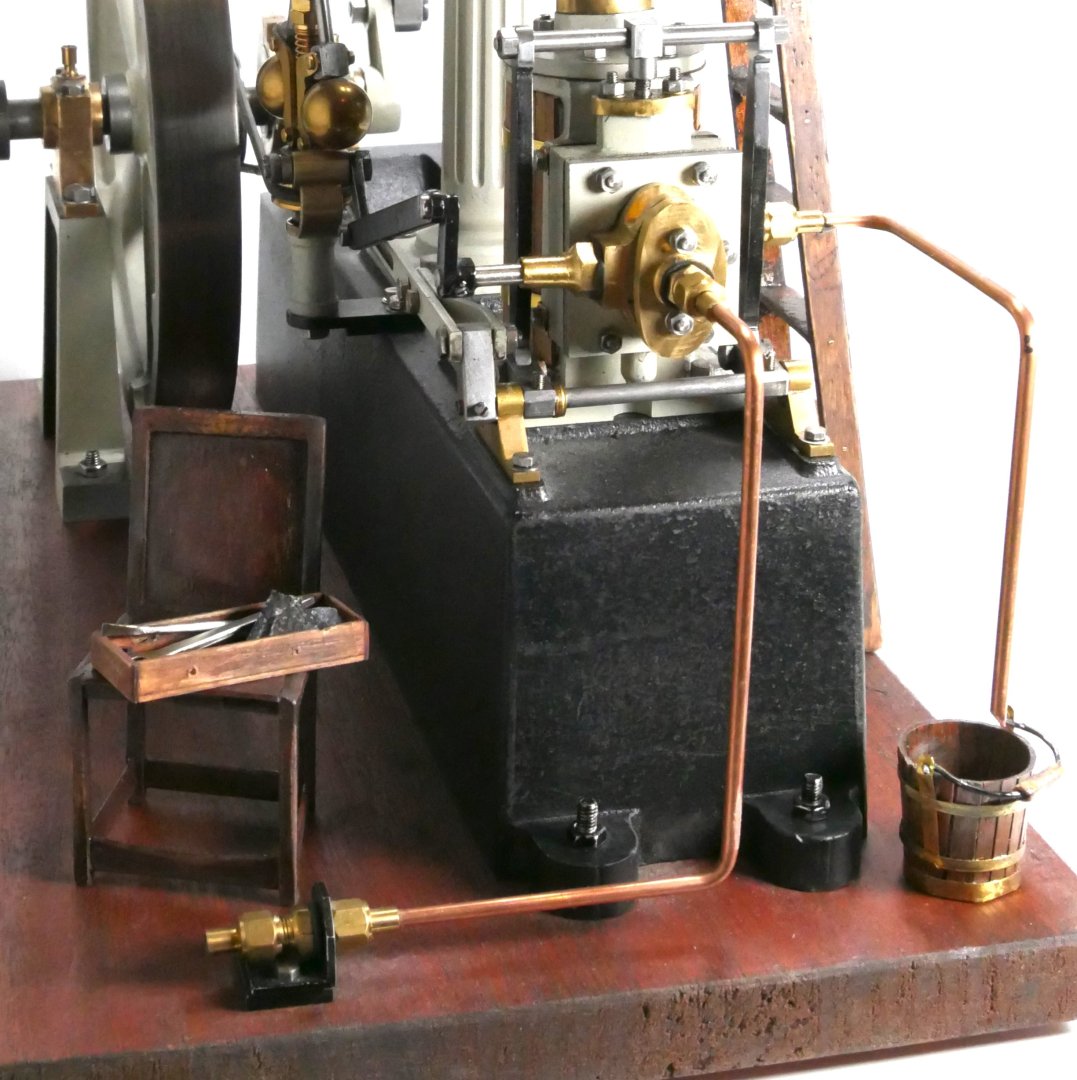-
Posts
867 -
Joined
-
Last visited
Content Type
Profiles
Forums
Gallery
Events
Everything posted by Rik Thistle
-
Eric, A nice looking building and well finished and furnished by you. UK pricing on the their website says £47 so I guess they set a price target and designed it to suit, hence no 2nd floor etc. I agree, that no one will notice that floor is missing. I can't understand either why they designed it so one couldn't work on the insides of the 'box'...strange. It is interesting what buildings/establishments appear in a new town during the first round of building works, and then what buildings follow in the 2nd and 3rd rounds etc as a town grows. I re-watched the TV series Deadwood (...gritty and not family viewing!) recently and it was a good insight in to how political power and money drives what buildings come first and which buinesses survive in the longer term. Have a good Christmas and New Year. Richard
-
Just for interest.... Moving a Churchill Mk 7 (flamethrower) tank and an explanation of the work shedule to get it running again..... Recovering a WWII Churchill Tank That Hasn’t Moved in 30 Years (45 mins) ... " What started as a “simple” recovery of a World War II Churchill Crocodile from a museum quickly turned into controlled chaos when our recovery gear bent straight away. In this video, we attempt to extract a 40-ton WWII flamethrower tank that’s been quietly ageing indoors for decades, load it onto Crouch Recovery’s lorry, haul it back to our workshop in Leicestershire, and finally take a look inside — including a rare Bedford Twin Six spare engine that came with it. Nothing goes exactly to plan… but that’s half the fun." Lots of 'creative' methods used for shifting the tank out of it's museum building onto the truck, and then off the truck in to the repair facility. But those chaps obvioulsy enjoy what they do....I wish them well. Richard
-
Eric, Keith suggestion of horses being kept in the barn piqued my interest. There is what looks like a corral attached to the right side of the building. That maybe means there was livestock of some sort kept inside, and that they needed daily fresh air ... or perhaps for auctioning? Does the spacing on the corral rails give any clue to the livestock type....the wooden rails look quite close together....were sheep a thing at those times? Richard Edit: Also the soil within the corral looks churned up.
-

Good 'Hobby Quality' Metal Lathes
Rik Thistle replied to tmj's topic in Modeling tools and Workshop Equipment
tmj, Everything that has been said before, plus... Since you are based in Texas, USA you might want to consider a local company like Grizzly ..... https://www.grizzly.com/metal-lathes ....showrooms in Missouri and Washington..... they also deliver to your home. From their website.... Our products are manufactured in several countries, including locations in Asia, Europe, and the U.S. Many of our products are made in China and Taiwan, while others are produced in the U.S. and Europe. I suspect most of their sub-$3k lathes are made in China, and maybe Taiwan. Those designs look very similar many other sellers of Chinese lathes, so they possibly come out of the same factory but with differing quality control standards. Chinese made lathes are no longer 'bad'.... they have upped their game, but rejects plus poorer quality control units can end up in the direct sales route. I would buy from a USA supplier (eg 'Grizzly' or The Little Machine Shop) since they will have already taken care of import admin etc. They can also deliver quicker from USA based stock, provide local Support (...most definitely not to be underestimated) and a wide range of accessories, again usually from stock. I'd avoid Amazon/eBay kit. You mentioned $3k as being a bit too high but if you buy a $1.5k lathe, say, you can expect to eventually spend at least that same amount on tooling and accessories....it's one of the laws of nature I'm afraid 😉 I have a lathe similar to the Grizzly G0765 - https://www.grizzly.com/products/grizzly-7-x-14-variable-speed-benchtop-metal-lathe/g0765 Mine's runs a 3" 3 jaw chuck (and collets, as Wefalck recommends) , has a 3.5" swing, 0.5HP brushless motor and quick release tailstock. I make metal model engines on it. You'll need a little space either end of the lathe for gearing access and tailstock wheel handling, plus a few inches behind it. Oh, and don't forget to get a light...I use a flexible Ikea clip-on one. Good hunting. Richard -
Eric, Good new building and gravel innovation. Keep 'em coming. I was wondering if the smoke stacks would cause any discolouration of the wooden buildings and tunnel entrance. In the UK, due to coal fires to heat homes, power industry and railway lines/junctions, many UK cities with stone buildings were almost black in colour...it was very bad. In the 1960s or so steps began to clean up those buildings. Lungs were a different matter ;-( Richard
-
Giorgio, What a great project. I'll follow from now on. Commander Piedrabuena had a very full life and seemed to want to help his fellow humans at every opportunity. Is this novel based on his adventures?.... Piedra Buena: Un Capitan Respetable, Historical Novel - https://www.amazon.com/Piedra-Buena-Respetable-Historical-Mastroscello/dp/9871468318 Thanks, Richard
-
Eric, The Inman & Sons building looks great. Your comment about the Sign's lettering size got me wondering if American 'shop fronts' also included the products sold (eg furniture) on the front signage, as well as the proprietor's name? Googling that thought for some imagery .... https://www.google.co.uk/search?lr=&sca_esv=b4f5d26490e949a3&as_qdr=all&udm=2&fbs=AIIjpHxU7SXXniUZfeShr2fp4giZ1Y6MJ25_tmWITc7uy4KIeioyp3OhN11EY0n5qfq-zENwnGygERInUV_0g0XKeHGJRAdFPaX_SSIJt7xYUfpm-75lA8Uar42yNWdqGuJlUAnl4VoyIc9TvIZo00AnzLuo73CKalUXQ8cWgmottQs4BXh0bU9aRqLPpzWejdabGFvk-MuP83mUuK41Ro6dMLX7Czip9A&q=19th+century+shop+front+american&sa=X&ved=2ahUKEwj99Mupl-qPAxXPQkEAHbyIPHwQtKgLegQIFxAB&biw=1376&bih=731&dpr=1.4 ...seems to produce a 50:50 split....some did, some didn't. That might possibly be related to whether or not the business was public facing or 'business to business' ... or both eg public facing needs to suck in passing trade so giving as much useful info as possible in the sign is a big help. Whereas B2B doesn't need that. Richard
-
Eric, Thank you for all that info....there is a lot going on. I imagine the person (or office) that collected all the data to produce the Waybills was very important and crucial to smooth, efficient running of the railway. Some questions - How did that office communicate with other remote regional offices to know what deliveries to expect etc? Or was there one central 'waybill office' per region? Did Telegraph enable the first Waybill usage or were Waybills initially carried on the trains? I think that a casual bystander like me only ever sees the tip of the iceberg regarding 'railways workings' - the same can be said of all professions I imagine. So thank you for giving a very insightful look at what is happening below the surface. Richard
-
Eric, Not being a model railway enthusiast this is all new to me but nonetheless fascinating and a bit complex. I'll re-read these posts to let it properly sink in. The diagrams and pink cards add a whole new dimension to it all. The last pic of the train passing through the bridge is quite picturesque. A very interesting build log....keep it coming 😉 Richard
-
Whilst I'm in a bit of a lull regarding model making, I have managed to add some accessories to the Beam engine layout. I always wondered what a steam engine maintenance scene would look like but couldn't really find any images or info so the following 3 pictures are of what my imagination came up with. I made up ... - a hook ladder for reaching the top oiling cups. Ladder based on a chemists/librarian type design. - a bucket to catch any drainage whislt maintenance is undergoing. - a late 1800s panel back chair - a tool tray. - tools for the tool tray eg spanner, jemmy bar, rags etc All parts were made from scrap wood left over from ship sprues etc. The bucket also has some thin brass sheet formed in to bands and hooks. I should really add an oil can but struggled to find out what style was used in the mid to late 1800s. Richard
-
Andrew, Sorry to hear that news about Vegaskip. His MSW contributions were really quite a joy to look at and imagine how he came to understand the scene he was painting. Richard
-
Eric, I think the narrower painted lines look neater and less obtrusive, but probably more time consuming to make. Tape will be much quicker to lay down, but could also start to curl up at the edges. Also, would grey paint/tape draw the eye away less? The electrical snippers give everthing scale....I didn't realise the scenery was smaller than I thought....very impressive. Richard
-
Threshing machines in Europe were designed to output into sacks. That rings a bell. I think a tractor and trailer* then carried the sacks from the thresher to the drying building. And then I can sorta recall the labourers taking the sacks on their backs up the stairs to the drying floor where the grain was then spread out. I now do remember there being neat piles of sacks stored in that building. Sacks played a big part in farm life. Richard *Again my memory is a bit fuzzy. Threshing was carried out near the farm buildings so it is possible there was no need for tractor/trailer - rather the labourers walked the short distance to the building with the sacks on their back, or perhaps used a sack trolley - I do remember there being a few sack trolleys about the farm.
-
Eric, On my Dad's farm (late 1950s/early 1960s) I vaguely remember the grain from the fields being lifted up* in to the first floor (UK terminology) drying loft of one of the large farm buildings where it was then spread out on the wooden floor. Rats and mice were always a problem hence plenty of farm cats. Once the grain was dry, it was then put in to sacks and slid down a short wooden slide fitted to the bottom of one of the first floor 'doors' onto the trailer positioned underneath where the sacks were stacked up. *I can't recall how the grain was first lifted up to the drying floor.... racking my memory but nothing yet. As Egilman says, a bucket chain lift could have been used but I don't recall seeing that. I know later in the farm's history there was a Lister bale/sack elevator used for moving heavy items up (and down?). Perhaps something like what is depicted here was used in the earlier days....https://www.alamy.com/stock-photo/straw-elevator.html?sortBy=relevant .... but handling loose grain would still need some kind of container to carry it up there. Maybe the workers carried grain filled containers on their back up the stairs. Richard PS: Page 37.... https://wshc.org.uk/wp-content/uploads/2012/08/Wilts-Farmsteads-Char-Statement-2017pt3-504.pdf seems to imply that, in the UK, in the 18th/19th century the grain was lifted up in sacks.
About us
Modelshipworld - Advancing Ship Modeling through Research
SSL Secured
Your security is important for us so this Website is SSL-Secured
NRG Mailing Address
Nautical Research Guild
237 South Lincoln Street
Westmont IL, 60559-1917
Model Ship World ® and the MSW logo are Registered Trademarks, and belong to the Nautical Research Guild (United States Patent and Trademark Office: No. 6,929,264 & No. 6,929,274, registered Dec. 20, 2022)
Helpful Links
About the NRG
If you enjoy building ship models that are historically accurate as well as beautiful, then The Nautical Research Guild (NRG) is just right for you.
The Guild is a non-profit educational organization whose mission is to “Advance Ship Modeling Through Research”. We provide support to our members in their efforts to raise the quality of their model ships.
The Nautical Research Guild has published our world-renowned quarterly magazine, The Nautical Research Journal, since 1955. The pages of the Journal are full of articles by accomplished ship modelers who show you how they create those exquisite details on their models, and by maritime historians who show you the correct details to build. The Journal is available in both print and digital editions. Go to the NRG web site (www.thenrg.org) to download a complimentary digital copy of the Journal. The NRG also publishes plan sets, books and compilations of back issues of the Journal and the former Ships in Scale and Model Ship Builder magazines.






